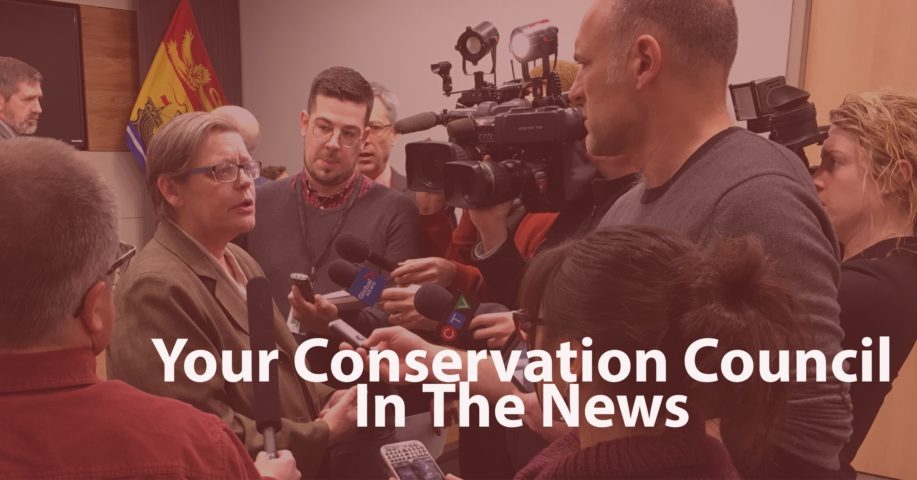
The Conservation Council joined with First Nation representatives, aquatic scientists, local businesspeople and residents of the Nashwaak Watershed at a press conference about the proposed Sisson Mine near Stanley on Feb. 27.
Our Executive Director, Lois Corbett, told Global New Brunswick that the coalition is calling on the federal government to keep fish-bearing brooks off the list for the proposed Sisson Mine’s waste dam.
“The environmental risks of a dam that’s twice as high as the Mactaquac and eight times as long breaking is way too great to be passed over with ease by the federal government,” Corbett said.
She said there is no evidence that the companies behind the mine, the Sisson Partnership, conducted a rigorous scientific assessment of more modern, safer ways of containing and storing the mine’s tailings and waste.
“A lot of the more modern mining techniques are above ground and dry storage, and that has never been adequately assessed either through the provincial environmental impact assessment nor federally.”
See more comments from conference participants below the video.
Read more comments from participants in the conference:
- “The major concern is that we’re giving our permission for the mining company to discharge effluent into what’s otherwise a pristine waterway,” said Peter Toner, the Nashwaak Watershed Association president.
- “Water moves and flows through deep aquifers, springs, bogs, brooks, marshes, lakes, rivers and into the ocean tides throughout Wolastokuk our homeland. Water is life,” said Wolastoq Grand Council Chief Ron Tremblay.
- “We say no to the abuse of the habitat of our finned brothers and sisters and all our other relations that will be put at risk by this project due to the design of the tailings pond and the plan to allow devastation of these two brooks, which feed into the Nashwaak rivershed and from there into the St. John or Wolastoq River,” said Kenneth Francis with Elsipogtog’s Kopit Lodge
- “The longer-term risks are significant. It’s not always as immediate as a failure, such a tailing pump, but those longer-term things such as the seepage from a tailings pond into tributaries,” said Dr. Meghann Bruce, an aquatic scientist from the University of New Brunswick.
- “The decision fails to consider the consequences of the demonstrably bad business case associated with this venture. The inevitable financial failure of this mine will leave the province with an environmental mess and unmanageable cleanup bill for decades to come,” said Lawrence Wuest, an ecologist and resident of the Upper Nashwaak Watershed.
- “The Nashwaak River is important to the lives of so many people. If the tailings dam fails, there is no recovery from this type of destruction as we have seen in the Mount Polley disaster. No amount of money will ever be enough to pay for the destruction of our watershed,” said Earl Brewer, a local businessman, philanthropist and native of Greenhill, a community near the proposed Sisson mine site.

